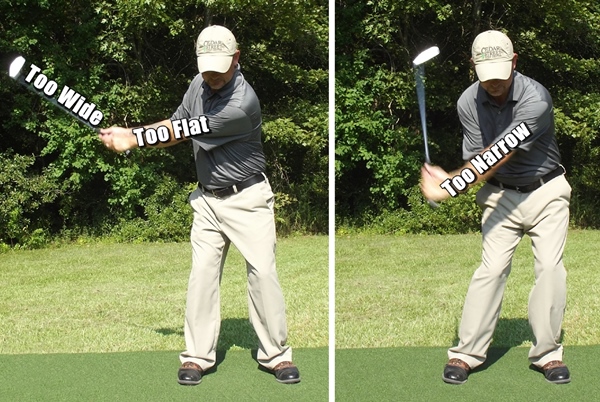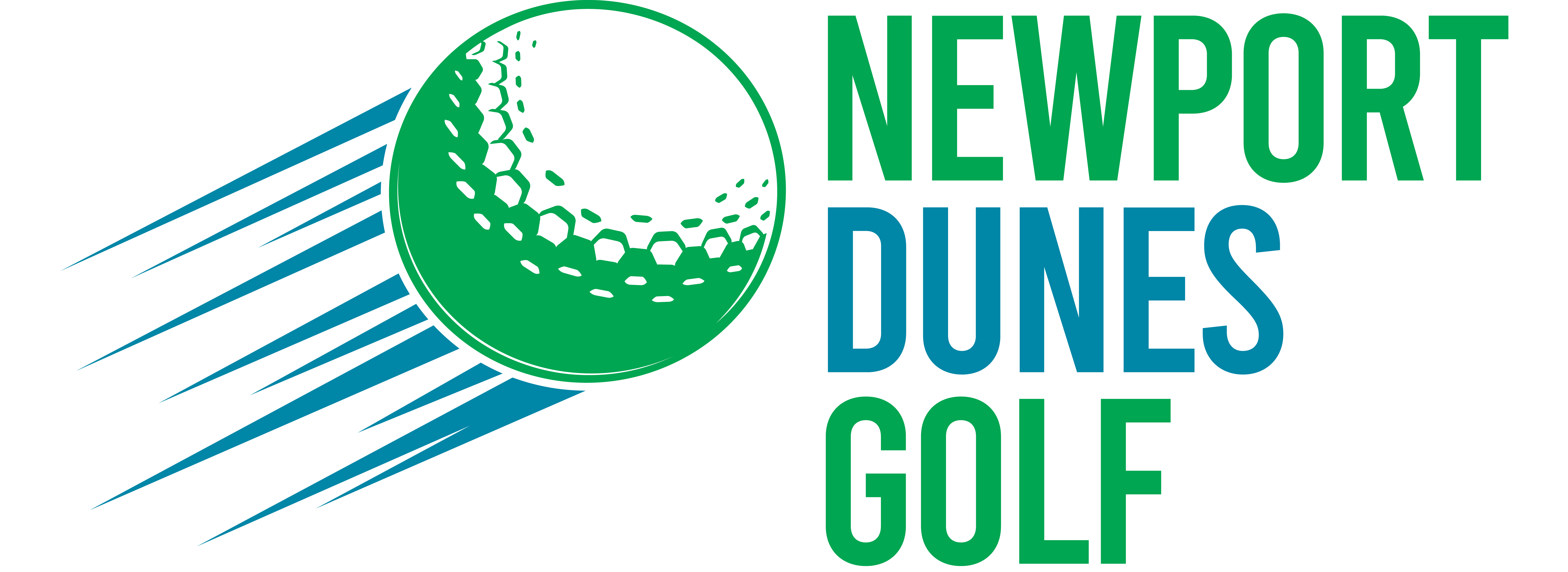
One of the things that are often ignored in the golf swing is lag. This is not something that is always in the mind of golfers because it is difficult to measure even with a paused image or a slow-motion video. However, creating lag is crucial not only for enhancing clubhead distance and speed but also for consistency and accuracy as well.
What is Lag in Golf Swing?
Golfers have challenges working on their lag because they do not understand it. Most players do not know what it actually is for and how it impacts their swing. All that players know is that lag is meant to assist in getting longer distances and faster clubhead speed.
Lag simply refers to the power move in the golf swing that gives you striking power and distance. Lag is created by the angle between the shaft of the club and the left forearm of right-handed golfers.
For you to create lag in your golf swing you should have the correct contact order of your arms, wrists, and the golf clubhead at impact. The order should be the elbow first, then your hands, and lastly the clubhead through to the ball. A golfer who has good lag will have incredible rhythm in their golf swing.
What is the Importance of Lag?

Lag tends to create more golf swing speed by enabling the clubhead to get to the bottom of the swing arc at the correct moment. This helps to ensure consistent ball striking that results in more consistency and distance. Lag also allows snapping motion through impact that makes the impact of the clubhead and the ball more solid.
Additionally, lag creates a downward motion towards the golf ball. If golfers allow the club to lag behind their hands through impact, then the angle of attack will be much better. Furthermore, the golf club has been designed to create a flex in the shaft allowing the club to lag back and then snap through impact to create consistency, distance, and a solid impact.
Most amateur golfers usually have very little or no lag, they may release too soon, and the clubhead slows down when it contacts the golf ball. When you master lag, it offers a boost to your quality of contact, distance, and clubhead speed. Most golfers see lag as expertise that separates the stragglers from the higher performers.
What Causes A Lack Of Lag?

The lack of lag on the golf swing can be caused by several faults that golfers make. They include the following.
When the Right Side is Dominant
As a right-handed golfer, it is easy to allow your right arm and shoulder to take over the swing to generate more power. However, this will reduce the lag since it will push against the shaft and will contribute to the shoulder prematurely opening in the downswing resulting in reduced golf swing speed.
Swing Arc is Very Small
The swing arc refers to the width that is created in the golf swing. When you widen the arc, you will create a higher potential for boosting golf swing speed. Different body types and sizes will create varying widths of the swing arc. Most players tend to bend their left arms at the beginning of the backswing and do not turn their shoulders as required. This restricts the ability to make a wider swing arc, generate more lag, and hit longer shots.
Casting the club
When the golf club is cast in the downswing you will reduce the power and the ability to hit your golf shots consistently. With casting the right hand’s position pushes against the club’s shaft when in the downswing and this lowers the lag angle. When this angle is reduced, the golf club will have no power source and it will get to the impact zone when in a straight line with the club and arms. Casting action is caused by too much grip pressure and excessive push from the right side.
Inadequate Shoulder Turn
You are missing out on some great power if you do not allow the shoulder turn to be about 90 degrees or more. If your shoulder does not turn adequately, you will miss out on power and extra speed that is created by a bigger shoulder turn. In addition, you will lose lag angle too which is crucial in increasing the swing speed. A shoulder turn that is below 90-degrees makes it challenging to bring your golf club down on the plane and usually results in steep and over the top downswings.
Excessive Grip Pressure
Having the right grip pressure amount is crucial and has significant effects on your ability to create lag in your golf swing. If the grip pressure is extremely strong, you will not hold a great lag angle and this will cast your club in the downswing.
Ways That You Can Create Massive Lag in Golf Swing

There are many ways for golfers to boost their golf swing speed and lag. Irrespective of your physical condition, skill level, or gold handicap, you can easily perform these techniques and hit longer golf shots. Most of these methods can be practiced at the comfort of your home or the driving range. Here are ways to create more lag in your golf swing.
Play Relaxed
This may seem counterintuitive, but most players usually tense up whenever they want to swing fast and hard. However, this is the opposite of what golfers should do. When you are relaxed when playing, you will create more lag and get the best golf shots ever.
Grip the Club Lightly
Gripping your golf club lightly is crucial as it can make or break the golf swing. With light grip pressure, you can easily hold the lag angle for longer and will release it at the correct time. You should aim for grip pressure of approximately 3 to 4 when considering a scale of 1 to 10. This is just enough pressure that will control your club since too much pressure will negatively affect the quantity of lag that is created.
Achieve a Full 90-Degree Shoulder Turn
If you want your golf shots to achieve longer and more distance, you need to get a full 90-degree shoulder turn. Contrary to popular belief, every golfer can achieve a full shoulder turn when they have an understanding of how the human body works.
The right side is usually dominant for many golfers and with this additional tension on the right side, turning the shoulders fully becomes a challenge. When you hold the club using only your left hand and keep practicing the golf swings, you will find out that making a full 90-degree turn is very easy. You should slowly add your right arm but still control the golf club using the left arm and make a full turn.
Generate a Wider Swing Arc
When the swing arc is wider, you will generate more power in your golf swing. However, this is different for every player since we all have different sizes and shapes. The strategy is at the launch of the takeaway and backswing, you must keep your right and left arm straight for as long as possible and avoid hinging your wrists too early. The wrist and the right arm will eventually hinge but it is essential that you allow this to occur naturally rather than forcing the wrist to break too early.
Left Side Dominating the Golf Swing
The golf swing is usually lead side dominant and all powerful and efficient swings tend to lead from the left side, especially in the downswing. If you implement this principle in your golf swing, you will achieve more lag and lower scores. When you playing make the backswing feel like your right arm and shoulder are providing support to the golf club.
You should also get the hands to your right thigh and ensure that the club is parallel to the ground. You should also allow the left side to control the movement and you will be surprised at how creating more lag in your golf swing is quite easy. The right side should just be like a passenger and should only support the golf club throughout the whole golf swing.
Cock the Wrists
A specified amount of lag naturally occurs in the golf swing of every player. When you swing fast, the golf club will flex and it will give you a lag. However, this is not an adequate lag that will give true power. Therefore, you need to cock your wrists and ensure that they are cocked throughout the downswing to give your golf swing some lag. To ensure that you do not release the wrists too soon, it is best to swing on an inside-out path.
Set Yourself Up for Lag
Most amateur golfers believe that keeping their chest and arms as a single unit and swinging while their arms are straight will guarantee a clean ball striking. Nevertheless, when the arms are straight, hitting with a lag is almost impossible. You can enhance lag by starting your golf swing with your elbow bent right.
Exercises That Will Create Lag
One-handed Drill. Right-handed golfers should utilize their right hand. You should grab the golf club in your hand and swing at the golf ball as though you were striking it using two hands. This will make you feel the clubhead lag behind the hand. You should keep working on the speed of your golf swing. Eventually, you can start striking balls the same way at the range.
The Whip. You should flip the golf club upside down and then grip it. Swing as though you are performing a normal swing, but be keen to listen. You will hear the club produce noise as it cuts through the air. Be sure to pay attention whenever you hear the noise so that you can take note of the point of contact. This simply means that you are getting maximum speed at the impact point.
Utilize Weighted Donut. Nothing else promotes speed and lag like a weighted donut at the end of your golf club. Using the donut will help you to get used to building up the speed.
Feet together drill. Instead of your customary golf stance, you should try to address the golf ball with your feet close together. You should take full swings afterward and you will notice that using the lower body in the swing will be difficult. As a result, this position will force your body to create lag to achieve any kind of power. With adequate practice, you will achieve good lag and better club speed.
In Conclusion
Even though lag will happen naturally whenever you swing your golf club, you should still practice to perfect this skill. This way, you will create lag and will also know what it takes to create adequate lag.
Lag is important to golfers because it helps in creating swing speed, a downward blow to the ball, and ensuring solid contact at impact. If you struggle with any of these factors, then it means you have poor lag. You will get the best results possible by training your body to know what the best golf lag feels like.











